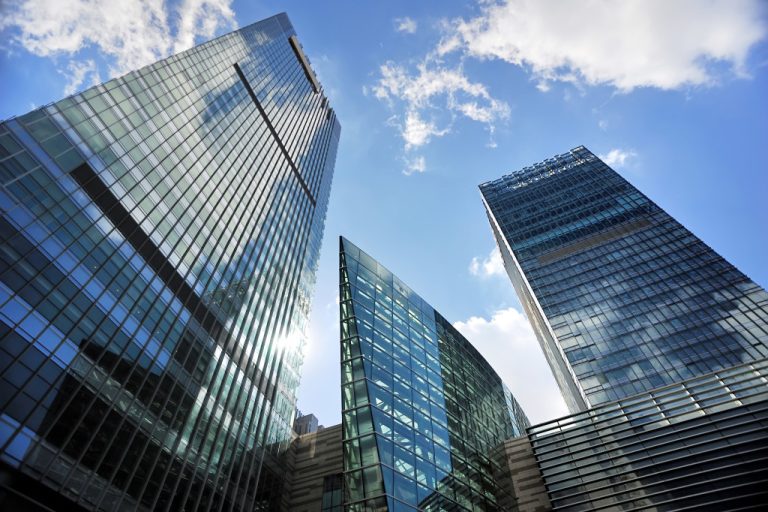- Commercial buildings can be a profitable investment with a potential return of 7.5% annually.
- Attracting tenants through high-quality facilities, amenities, and services is crucial for maintaining a steady income.
- Offering amenities like parking, food establishments, fitness centers, and high-speed internet can attract and retain tenants.
- Evicting non-paying tenants requires understanding the relevant laws and regulations.
Managing a commercial building can be a lucrative and profitable investment for property owners. Commercial facilities such as office spaces, retail centers, industrial parks, and warehouses generate a steady income through tenant rental payments.
According to a report by the National Association of Realtors, the average cap rate for commercial properties was 7.5% in 2019. The capitalization rate is the property’s net operating income ratio to its purchase price. This means that for every dollar invested in a commercial property, owners can expect a return of 7.5 cents annually.
Moreover, commercial properties also offer long-term appreciation in value, known as appreciation potential. Real estate values historically increase over time, meaning owners can benefit from the property’s appreciation while generating income from its use.
Another advantage of owning a commercial building is the potential tax benefits. Property owners can write off property taxes, insurance, mortgage interest, and maintenance costs. In addition, owners can also claim property depreciation, reducing their tax liability.
However, managing a commercial building will require significant time and effort. Here are a few tips to help ensure you make the most out of your investment:
Attracting Tenants

One of the critical aspects of managing a commercial building is attracting and retaining tenants. Without a steady stream of tenants, the property’s income-generating potential may suffer, and vacancy rates can increase, leading to financial losses for the property owner.
Property owners should provide high-quality facilities, amenities, and services to attract tenants. This can include landscaping and maintaining the property’s exterior, clean and well-maintained common areas, and security measures such as cameras and alarms.
Moreover, property owners should consider the location of their commercial buildings. A convenient location with easy access to transportation and nearby amenities like restaurants, shopping centers, and parking facilities can attract a diverse range of tenants and increase the chances of retaining them.
Offering Helpful Amenities

In addition to providing high-quality facilities and services, offering helpful amenities can play a crucial role in attracting and retaining tenants for commercial buildings. Amenities are additional features or benefits that property owners can provide tenants, making their stay more comfortable, productive, and enjoyable. Here are some examples of amenities that commercial property owners can provide:
Parking Space
Adequate parking space is a critical amenity that can benefit many businesses. For instance, commercial spaces in busy city areas can benefit from designated parking slots, especially those with reserved parking spaces for people with disabilities. Parking can prevent tenants from wasting their valuable time looking for parking spaces and make their clients’ and customers’ visits more convenient.
Offering ample and secure parking can also protect tenants and their businesses. Security cameras, lighting, and alarms in parking lots can reduce the risk of theft, vandalism, and break-ins. Overall, having convenient and secure parking options can give commercial property owners a competitive advantage and positively impact their tenants’ satisfaction and retention rates.
Food Establishments
Food establishments are another amenity that can attract and benefit commercial tenants. Having on-site or nearby restaurants, cafes, and other food establishments can cater to tenants’ needs by providing quick and accessible lunch options for busy workdays, client meetings, or work events. In addition, having nearby eateries can make the building more attractive and convenient for clients, partners, and visitors.
Fitness Centers
Fitness centers are an increasingly popular amenity for commercial properties. Having a gym on-site or nearby can provide tenants with a convenient and healthy way to stay fit and achieve work-life balance. Fitness centers can offer state-of-the-art exercise equipment, group fitness classes, personal training, wellness programs, and more. These amenities can boost tenants’ morale, productivity, and overall satisfaction with the commercial building.
High-Speed Internet
In today’s digital world, high-speed internet has become a basic necessity for most commercial tenants. Providing fast and reliable internet services can make a significant difference in attracting and retaining tenants. This can include having fiber-optic or wired connections, Wi-Fi access, and tech support to meet tenants’ online needs.
Evicting Unruly Tenants
Evicting non-paying tenants is a necessary action that property owners may have to take eventually. The eviction process can be long and drawn out, especially in commercial buildings, so it’s essential to understand the relevant laws and regulations beforehand.
Generally, before evicting tenants from a commercial building, the landlord must provide written notice of termination or eviction and allow sufficient time for the tenant to remedy their situation. Depending on local laws, this period can range from three days to six months. Property owners can also get an eviction order from a court for immediate possession of their property if necessary.
Final Thoughts
Managing a commercial building can be immensely rewarding with the right know-how. Property owners should focus on providing high-quality amenities, attracting and retaining tenants, and understanding the laws and regulations of eviction. With careful consideration and planning, managing a commercial building can become an increasingly profitable venture with a steady income for many years.



